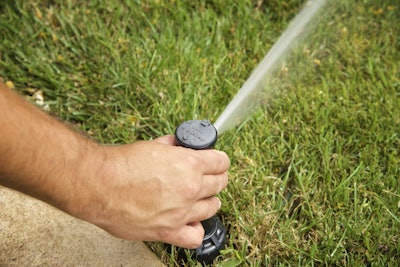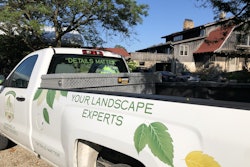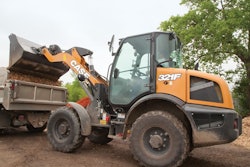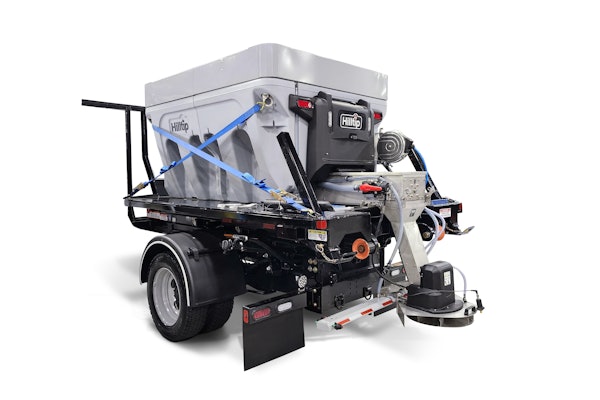
The importance of irrigation winterization
“(The purpose of winterizing an irrigation system) is to make sure that all of the water is out of the line, so the system does not freeze,” says Aaron Knepp, owner of a Conserva Irrigation franchise in Columbus, Ohio. “You have to get all the water out of the line. The main plumbing, the backflow device, is typically outside on 95 percent of the jobs in our area, and that is the first thing that freezes.”
When irrigation systems aren’t properly winterized or winterized at all, Knepp says they can show signs of damage later on in the spring, and if water is left behind in the pipes during the winter, it will expand and freeze, which could cause the pipes or fittings to burst.
“You get what you pay for on this,” he says. “I’ve seen a lot of properties where we get there in the spring and they are not winterized properly, and we end up having to do hundreds of dollars of repairs. And if it had been winterized properly, they wouldn’t have that.”
Generally speaking, it’s recommended that you start this process once you’ve experienced three or more days at three degrees below freezing, but Knepp notes that landscapers in areas that experience mild winters can wait until the beginning of October or even into November before it’s necessary to perform this service. For customers with more intense winters, Knepp says it’s probably a good idea to go ahead and start the process in September.
The size of your customer’s property will determine the length of time it takes to complete this service, but overall, Knepp says it shouldn’t take very long to properly get the system taken care of if you’re using the proper air compressor.
“Typically, we’re seeing it take about 20 minutes to winterize the system,” he says. “On larger properties and ones with older systems, it can take longer, maybe 45 minutes. But on average, it takes about 20 to 30 minutes total.”
In many cases, Knepp says winterizing an irrigation system is bundled into a fall service package that also consists of aerating, overseeding or interseeding. Since the seeding process is typically followed by deeply watering the turf, it’s not recommended that you perform the winterizing process immediately after seeding.
Knepp says his crews will visit the customers and offer a “fall tune-up,” which consists of his crews marking each sprinkler head, aerating, overseeding and setting up the irrigation controller to water the turf enough to stimulate growing conditions. Thirty to 45 days later, Knepp says his crews will come back and winterize the irrigation system.
“A lot of times, companies will just hook the air compressor up and either put it on a small timer and just hang around the shop until they shut it down, whereas we teach our technicians to check every single sprinkler head and make sure there are no leaks,” he says.
Overall, Knepp says the winterization process is straightforward, and it needs to be completed before the first frost if at all possible. Winterizing an irrigation system is most commonly achieved by manually draining it, the automatic drain method or by the blow-out method.
Repairs and safety
Knepp says a good rule of thumb when inspecting your customer’s irrigation system is to always keep detailed notes on all of your systems and any issues that you might see when inspecting.
 Photo: Beth Presley/Total Landscape Care
Photo: Beth Presley/Total Landscape CareIf your customer’s system has seen some damage for whatever reason, Knepp says unless the damage is severe, you should still easily be able to perform the winterization process and repair the damage come spring. If the damage is major, he says, it’s important to go ahead and make the necessary repairs as quickly as possible before attempting to winterize the system.
As a next step, be sure to drain all of the water and pump down or drain the underground pipelines. A lot of underground pipelines will be located far enough down that they won’t receive much freeze damage, however, they will still require pumping or draining enough water from them to ensure the upper portion of Z-pipe risers and pump manifolds are empty.
To do this, purge the system with air or by modifying a fertilizer pump to pump the system at its lowest outlet or inlet point. When winterizing an irrigation system, keep in mind that you’ll need to wear ANSI-approved eye protection, as compressed air could cause serious injury to eyes. Also, avoid standing over any components of the irrigation system during the blow-out process.
Do not exceed 80 pounds per square inch (psi) when using an air compressor, and try to avoid compressed air on the backflow device because the rubber seals on a pressure vacuum breaker could potentially melt due to the heat of the air.
When the pipes have been blown out, avoid exposing them to more compressed air since this can cause friction and heat that will cause damage to the system. Do not run the compressor unless at least one of the irrigation control valves is open.











